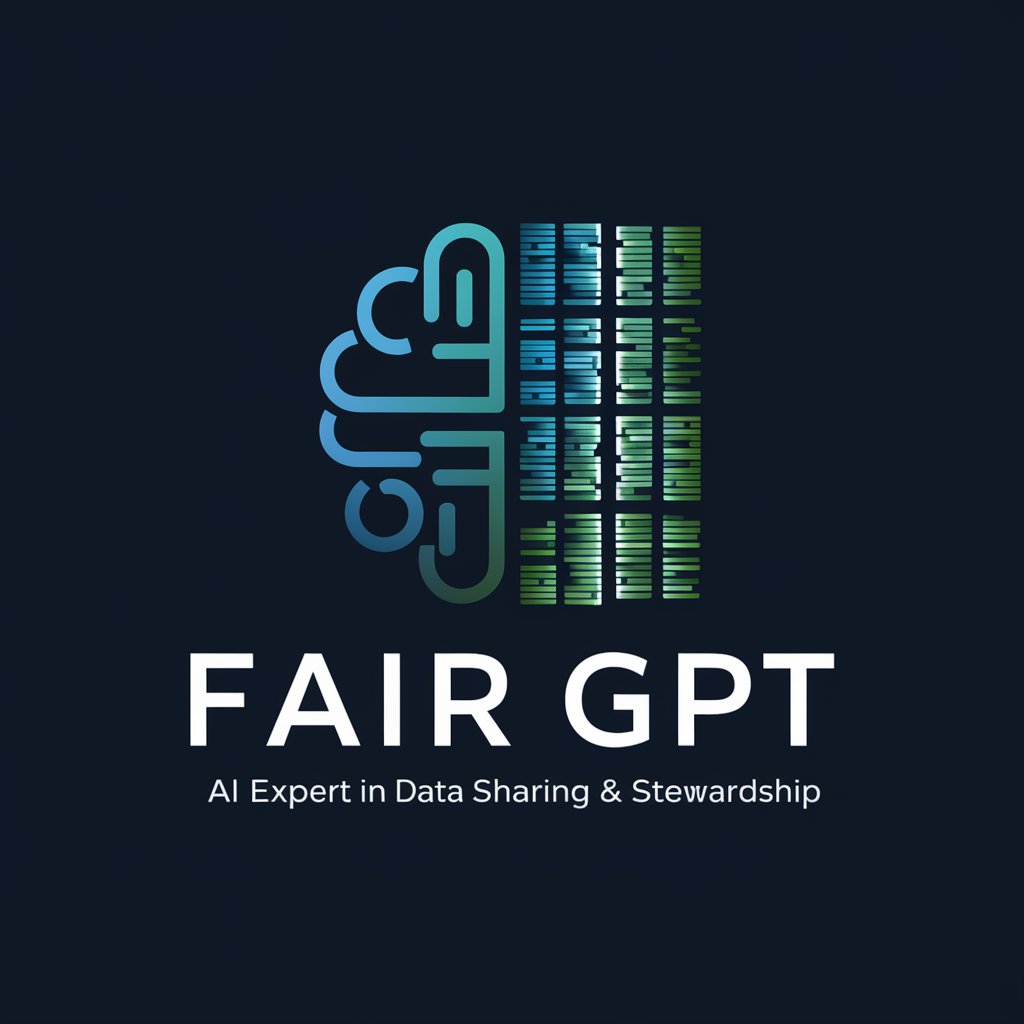
FAIR - FAIR Data Management

Hello! How can I assist you in making your data FAIR today?
Empowering Research with AI-Driven Data Stewardship
Can you help me understand how to improve the metadata for my dataset?
What are the best practices for making my research data more accessible?
How can I ensure that my data is interoperable with other datasets?
What steps should I take to make my data more reusable by other researchers?
Get Embed Code
Understanding FAIR: Foundations and Purpose
FAIR stands for Findable, Accessible, Interoperable, and Reusable, representing a set of guiding principles to enhance the ability of machines and humans to automatically find and use digital assets, including datasets, software, and research outputs. The fundamental purpose behind FAIR is to ensure that digital resources are more readily discoverable and usable by both humans and computational systems, thereby facilitating knowledge discovery and innovation. An example illustrating FAIR principles in action could be a research dataset deposited in a public repository. The dataset is assigned a persistent identifier (such as a DOI), rich metadata that clearly describes the data and its context, stored in a way that supports interoperability with other datasets, and made available under clear usage licenses to ensure reusability. Powered by ChatGPT-4o。

Core Functions of FAIR Services
Enhancing Discoverability
Example
Assigning persistent identifiers and rich metadata to datasets
Scenario
A researcher uploads a dataset related to climate change to a data repository. The dataset is assigned a DOI and described with comprehensive metadata, including keywords and geographic information, making it easily discoverable via search engines and repository search functionalities.
Facilitating Accessibility
Example
Providing clear access protocols and APIs
Scenario
A public health dataset is stored in a secure repository that provides API access. Researchers can access the data through documented APIs, ensuring they can retrieve the data programmatically for analysis while adhering to any necessary security protocols.
Ensuring Interoperability
Example
Adopting common standards for data formats and vocabularies
Scenario
A genomics dataset is prepared using widely accepted data standards (e.g., FASTQ for sequence data) and ontologies for metadata, ensuring that it can be seamlessly integrated with other biological datasets for comprehensive bioinformatics analyses.
Promoting Reusability
Example
Including clear usage licenses and detailed documentation
Scenario
An archaeological dataset is accompanied by detailed documentation on the methodology of data collection and analysis, as well as a CC-BY license, allowing other researchers to understand, replicate, and build upon the original work.
Target User Groups for FAIR Services
Academic Researchers
Academic researchers across various disciplines benefit from FAIR services by gaining enhanced access to a wealth of data resources for their research, leading to more robust and reproducible studies.
Data Stewards and Librarians
Data stewards and librarians use FAIR principles to curate and manage data collections, ensuring that datasets under their stewardship are preserved, accessible, and usable over time.
Industry Professionals
Professionals in industries such as pharmaceuticals, environmental sciences, and technology leverage FAIR data to inform product development, policy-making, and innovation strategies.
Government and Policy Makers
Government agencies and policy makers utilize FAIR-compliant data to make informed decisions, develop policies, and monitor their outcomes based on reliable and reusable data.

How to Use FAIR
Start Your Free Trial
Begin by visiting yeschat.ai to sign up for a free trial without the need for a login or ChatGPT Plus subscription.
Identify Your Needs
Determine the specific research data management needs or challenges you face, such as data sharing, preservation, or making data findable and accessible.
Engage with FAIR Principles
Familiarize yourself with the FAIR principles (Findable, Accessible, Interoperable, Reusable) and assess how your data or datasets can adhere to these standards.
Implement FAIR Guidelines
Apply the FAIR guidelines to your datasets by ensuring proper metadata, using persistent identifiers, adopting standard data formats, and choosing suitable repositories for data sharing.
Evaluate and Adjust
Regularly review the FAIRness of your data management practices and make necessary adjustments to improve data discoverability and reusability.
Try other advanced and practical GPTs
Artistic Muse
Empowering your creativity with AI

Metabolic Intelligence
AI-Powered Personal Nutrition Guide

Physics Oracle
Unlocking the mysteries of physics with AI

KoreAI Language Buddy
Your AI-powered cultural and language companion.

Language Artisan
Crafting Worlds with Words

Wealth Assistant
Empowering Your Financial Decisions with AI

マクロ経済を学ぶGPT
Demystifying Macroeconomics with AI

默拉智能小A
Empower your communication with AI innovation

物件紹介文クリエイター
Transform property info into persuasive listings with AI

ダイエット🏃🏻♀️|ボディーメーカー【写真による食事管理】
Transforming meal photos into dietary wisdom.

Dungeon Companion
Streamline Your Adventure with AI

Andrew Tate
Empowering Success with AI-Powered Insights

FAIR Q&A
What are the FAIR principles?
The FAIR principles are a set of guidelines to make data Findable, Accessible, Interoperable, and Reusable. They aim to enhance the ability of machines and people to automatically find and use data, while ensuring that the data and their attribution are available and accessible.
How can I make my data Findable?
To make your data findable, assign a persistent identifier (PID) like a DOI to your datasets, provide rich metadata, and deposit your data in a searchable resource or repository.
What does it mean for data to be Accessible?
Accessible data means that once found, the data can be retrieved by humans and machines. Data should be stored in a reliable repository, and metadata should remain accessible even when the data are no longer available.
How do I ensure my data is Interoperable?
To ensure data interoperability, use community-accepted standards, vocabularies, and ontologies for data and metadata. This facilitates the integration and analysis of data collected from various sources.
What strategies can enhance data Reusability?
Enhance data reusability by providing clear and accessible data usage licenses, comprehensive metadata, and detailed documentation about the data collection, processing, and analysis methods.